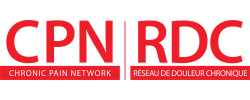| En Français | Return |
Patient Evidence Summary

Doctor, can you tell me about the GET living treatment for adolescents with chronic pain?
GET living is an individualized cognitive and physical program targeting those activities that the adolescent with chronic pain has identified as fearful or worrisome. GET living treatment showed decreased fear of pain and reduced avoidance of activities at 3 months. There was no difference in results between the GET living and multidisciplinary treatment groups using cognitive behaviour and physiotherapy. Both groups improved.
What is the evidence?
SUMMARY OF FINDINGS
GET living treatment vs multidisciplinary treatment
| Outcome | Treatment | Baseline | 3 months | Effect |
|---|---|---|---|---|
| Fear of pain* | GET living Multidisciplinary | 32 30 | 21 20 | No difference between treatment groups |
| Avoidance of activities* | GET living Multidisciplinary | 27 25 | 19 19 | No difference between treatment groups |
| PHODA pain# | GET living Multidisciplinary | 3.81 4.19 | 3.09 3.34 | No difference between treatment groups |
| Functional disability^ | GET living Multidisciplinary | 25 27 | 18 19 | No difference between treatment groups |
*Fear of Pain Questionnaire (24 items; 5-point scale: higher score = greater fear of pain or greater avoidance of activities)
#Photograph Series of Daily Activities (50 photos of activities; each photo rated on 10-point scale for "worried that this activity will be harmful to your body": higher score = greater worry)
^Functional Disability Inventory (15 items; 5-point scale: higher score = greater disability)
What kind of study was this?
This was a randomized controlled trial.
Who? This study included 68 youths aged 8 to 17 who had musculoskeletal pain not due to acute trauma for an average of 3 years with moderate to high pain-related fear and moderate to high functional disability. Youths with a medical or psychiatric problem that would interfere with treatment were excluded.
What? The study compared GET living treatment versus multidisciplinary treatment.
GET living treatment | vs | Multidisciplinary treatment |
|---|---|---|
1-hour sessions (2 per week) focused on educating the youth (and caregiver) about pain psychology, how to modify their behaviour in response to pain and set goals. Youths were gradually exposed to activities seen by them as potentially "harmful" or "worrisome" and taught coping strategies (e.g., breathing, stretches, helpful thoughts) to allow them to continue. Delivered by a pain psychology provider and a physiotherapist over 6 to 8 weeks. | 1-hour sessions (2 per week) focused on Cognitive Behaviour Therapy (CBT). CBT is a type of talking therapy that teaches a person how to manage their pain by thinking and behaving in a more positive way. Physical therapy involved a home exercise program which encouraged activity. Delivered by a pain psychology provider and a physiotherapist over 6 to 8 weeks. |
Why was this research done?
Chronic pain can lead to avoidance of daily activities, sports, and social activities due to fear that they will make the pain worse. The GET living treatment is based on the theory that gradual, short-term exposure to these activities after education about pain will help adolescents with chronic pain return to performing the activities they value. The researchers wanted to know if the GET living treatment reduces fear of pain-related activities and avoidance of these activities more than a standard multidisciplinary treatment. They found that both treatments worked equally well with no major differences between them. Concerns about this study include that the treatments in both groups were delivered by the same specialists, that the COVID pandemic reduced the delivery of in person sessions (54% of the sessions were by ZOOM video), and that the majority of participants were white.
This Evidence Summary is based on the following article:
Simons LE, Harrison LE, Boothroyd DB, et al. A randomized controlled trial of graded exposure treatment (GET living) for adolescents with chronic pain. Pain. 2023 Aug 25. doi: 10.1097/j.pain.0000000000003010. PubMed
Published: Friday, September 29, 2023
Last Updated: Tuesday, October 31, 2023
Please note that the information contained herein is not to be interpreted as an alternative to medical advice from a professional healthcare provider. If you have any questions about any medical matter, you should consult your professional healthcare providers, and should never delay seeking medical advice, disregard medical advice or discontinue medication based on information provided here.
|
This Evidence Summary was printed from the PAIN+ CPN website on 2025/04/26. To view other Evidence Summaries or to register to receive email notifications about new Evidence Summaries, please visit us at https://www.painpluscpn.ca/Articles/EvidenceSummaries |

|






 , McMaster University
, McMaster University